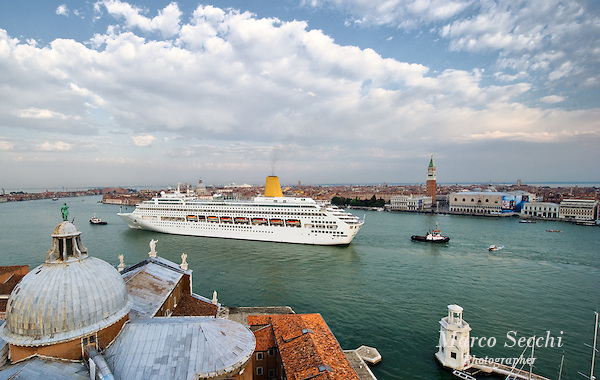While working 24/7 on a book about Canaletto...and being only at the 2 chapter out of 9 and well behind schedule I fell in love today with Carpaccio and in particular with this painting
The works dates to Carpaccio's mature period, when he was called by the "scuola" (guild or corporation) of the Schiavoni (Dalmatians) to executed a cycle of seven paintings on the stories of patron saints (George, Jerome and Tryphon) and evangelic episodes.
The work portrays the traditional episode of St. Jerome appearing to St. Augustine to announce his imminent death and departure to Heaven. Carpaccio portrayed the African saint in his studio, in the moment in which he is distracted from his reading by the voice of Jerome, coming as a luminous shape in the window near the desk. The room is that typical of an acculturated humanist of the painter's age, depicted with his usual attention to details.
The room is grossly rectangular, with a painted ceiling. Augustine sits on a bench over a pad, covered with green cloth and lined with studs; the desk is supported by a candelabrum. Some of the books show musical lines. Under the window is are a file and a hourglass. Other elements depicted include measurement instruments, precious caskets, a bell, a shell, an armillary sphere, vases, bottles and others.
In the center is a niche with an altar, where, as shown by the curtain moved aside, are Augustine's liturgic objects: a vest, a mitre, the crosier and a thurible which hands from two candelabra. At the side of the altars are two twin portals, with fine decorations in Renaissance style. The left one is open, and shows a small room with a window, according to the taste for different lightning sources inspired by the Flemish painting: this had become popular in Venice after its use by Antonello da Messina in paintings such as St. Jerome in His Study, which Carpaccio could perhaps observe and study. Here is a further number of details: a table with three couples of crossed legs and covered by a red tablecloth, further books, and, on a shelf running for the room's perimeter, several scientific and astronomical instruments, including Regiomontanus' astrolabe which, at the time, was owned only by John Bessarion, to who it is likely to have inspired Carpaccio for the saint's representation.
On the left two long shelves, housing more books with gaudy covers, a series of antiques (vases, bronze and others), a candle basement shaped as a lion paw (another is placed symmetrically on the opposite wall) and, below, large volumes, a seat and a prie-dieu. In the center of the room is a Maltese dog and, nearby, a cartouche with the artist's signature and the date.
Seeing this painting reminded me that I saw at the British Museum the preparatory work of the very same painting...and is here as you may see there was and ermelin!






